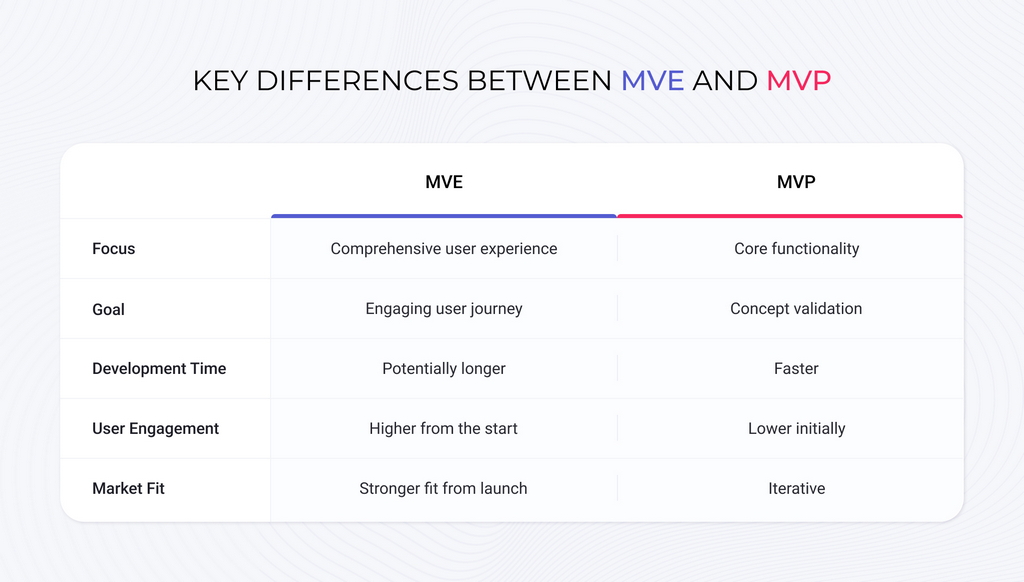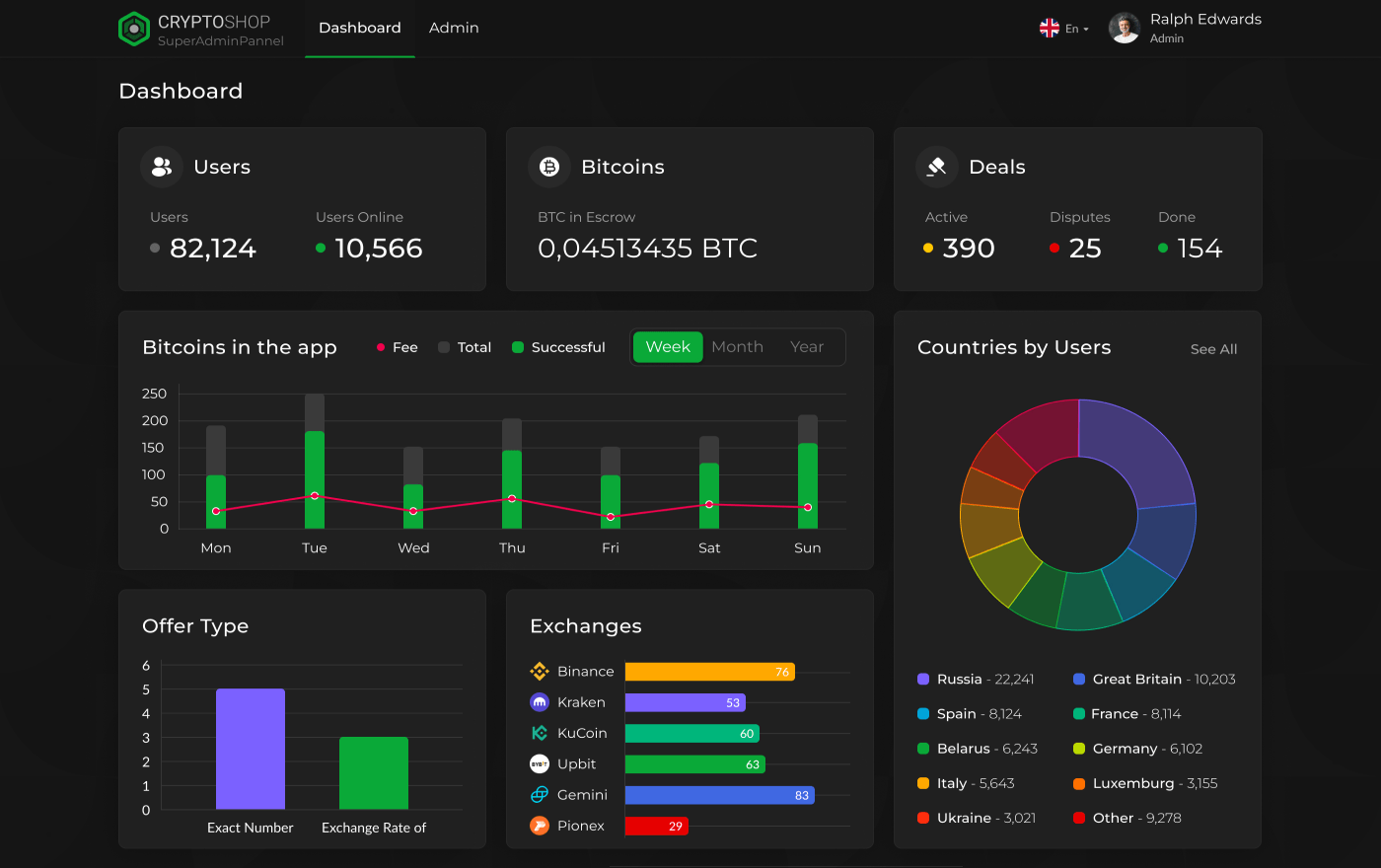Summary
The article compares two approaches in digital product development: Minimum Viable Product (MVP) and Minimum Viable Experience (MVE). While MVP focuses on delivering basic functionality to test market fit, MVE emphasizes providing a complete and satisfying user experience from the outset. The choice between MVP and MVE depends on factors such as business goals, target audience, and market conditions.
In the world of software development, launching a successful digital product often hinges on starting small and learning fast. Traditionally, the Minimum Viable Product (MVP) approach has guided startups and enterprises alike. However, a newer concept – the Minimum Viable Experience (MVE) – is gaining traction for delivering not just functionality, but a complete and satisfying user experience from day one.
At XB Software, we’ve seen firsthand how selecting the right development strategy can impact a product’s success. So, let’s dive into the key differences between MVE and MVP development services and explore how choosing the right approach can transform your product journey.
Understanding MVP: Building for Functionality First
Considering that you can hear about MVP from far and wide, let’s just remember the basics of how it helps businesses. The MVP focuses on delivering a product with just enough core features to validate a concept and gather user feedback. It’s about efficiency and learning:
- Core Idea Validation. By launching a stripped-down version, companies can test assumptions and refine their product based on real-world usage. Early adopters provide invaluable feedback that guides product iterations and improvements.
- Fast Market Entry. The emphasis on essential functionality speeds up time-to-market, allowing businesses to capture market share quickly and stay ahead of competitors.
- Cost Efficiency. Focusing only on critical features minimizes initial development expenses. However, this approach demands agile development practices to rapidly incorporate user feedback and improvements.
- Risk Management. MVPs help to reduce the risk of developing features that users do not want by focusing on validated learning and iterative development.
While the MVP model excels in rapid validation, it may lack the refined UX that today’s market demands. Companies need to be prepared for potential customer dissatisfaction if the initial release lacks polish or depth. When should a business choose MVP over MVE? Well, an MVP is often suitable for early-stage testing and market validation when speed and cost efficiency are key. It’s ideal for startups looking to test hypotheses quickly and refine their product based on feedback.
Read Also Fast and Furious: How to Develop Valid Prototype in Less Than 5 Days Following MVP Design Sprint?
Introducing MVE: Prioritizing the User Journey
As for MVE, it requires more analysis as it may be an unfamiliar concept for many businesses. The MVE builds upon the MVP by emphasizing not just functionality, but the overall experience. The goal is to deliver a cohesive product that delights users from the outset:
- Holistic Experience. It ensures that users can seamlessly achieve their goals, even if the product is still evolving. It focuses on smooth navigation, intuitive design, and consistent functionality.
- Higher Engagement. A strong focus on UX can lead to higher customer satisfaction and retention. Engaged users are more likely to become advocates for the product, contributing to organic growth.
- Strategic Differentiation. Companies can stand out by offering a polished experience, even in early stages. Prioritizing UX can create a competitive advantage that sets the product apart.
- Long-Term Vision. The approach aligns with a customer-centric development philosophy, where each iteration enhances the user’s journey rather than merely adding features.
What are the steps to creating an MVE? The process involves several key steps: identifying user goals and critical touchpoints, designing for seamless user experiences, testing with early adopters to gather feedback, and refining the involvement iteratively to ensure it aligns with user needs and market expectations.
While this approach may require more resources initially, it often results in stronger user loyalty, reduced churn, and better long-term success. User experience encompasses every interaction a user has with a brand. To deliver an MVE, you need to consider key elements like UI design, branding, marketing, trials, and the purchase process. So, how does the MVE approach impact product-market fit, you may ask? By prioritizing user experience, it can help businesses achieve product-market fit faster by meeting customer expectations and delivering value from the start.
Key Differences: What Is the Relationship Between MVE and MVP?
The MVE builds upon the foundation of the MVP by incorporating a strong focus on user experience. While the MVP prioritizes delivering core functionality to validate a product idea, the MVE ensures that users have a seamless and satisfying experience from the start. MVE is just as important as MVP. If you have a poorly executed MVP, even the best MVE won’t save it. On the flip side, if you don’t maintain or enhance the user experience, an MVP with groundbreaking features won’t truly delight customers.

Now let’s see in detail how these approaches differ. The differences between an MVP and an MVE extend beyond technical development to strategic and business implications:
- Value Delivery. The MVP delivers basic functionality that allows users to perform essential tasks. It focuses on validating whether the product idea is viable in the market. In contrast, the MVE aims to deliver value by ensuring users have an enjoyable and functional experience from the very beginning, reducing friction and increasing satisfaction.
- Feedback Quality. MVP feedback is primarily centered on functional aspects such as whether features work as intended and address user needs. However, MVE feedback encompasses both functionality and experience, offering richer insights into how users interact emotionally and cognitively with the product.
- Target Audience. MVPs often appeal to early adopters who are more tolerant of incomplete features and rough user interfaces. On the other hand, MVE targets a broader audience, including less tech-savvy users who expect a smoother and more intuitive experience.
- Speed vs. Experience. While MVPs prioritize speed to market, MVEs focus on balancing speed with delivering an optimal user experience. Although MVEs might take longer to develop initially, they can reduce churn and improve adoption rates by meeting user expectations upfront.
- Iterative Improvements. MVPs heavily rely on rapid iterations and constant updates to evolve into a fully-fledged product. In contrast, MVEs strive to start with a more complete version, requiring fewer drastic overhauls and smoother iteration cycles.
To put it simply, think of the Minimum Viable Experience like planning a simple but enjoyable birthday party. MVP, in this case, represents the basic elements: just a cake and a few friends. The party technically works, but it may not be very memorable or enjoyable. MVE, on the other hand, means that you don’t need a grand event, but you want to ensure a few key things are in place for a good experience, such as a playlist for music, enough seating for everyone, a few simple decorations, clear instructions about when and where the party is happening. These small but thoughtful additions create a smooth, enjoyable experience without needing a lavish party.
You may also wonder how do MVE and MVP fit into Agile and Lean methodologies? Both align well with these principles by promoting iterative development and continuous feedback. The MVP supports rapid experimentation and learning, while the MVE emphasizes refining user experience alongside feature development, enabling a customer-centric approach.
What Are Some Examples of MVPs and MVEs?
In general, MVP examples include basic versions of SaaS platforms focused on core features. MVE, on the other hand, includes early versions of products, like Airbnb or Spotify, that offer both functionality and user engagement through thoughtful design.
For better understanding, let’s consider a P2P cryptocurrency exchange that we made for one of our clients.

Source: P2P Cryptocurrency Exchange
MVP Approach
An MVP for a P2P cryptocurrency exchange includes only the most basic functionality necessary for users to buy and sell cryptocurrency. This would include essential features like:
- User registration and authentication;
- Basic wallet functionality (deposit and withdraw);
- Cryptocurrency listings (buy/sell orders);
- Peer-to-peer transaction system.
While the exchange technically works and allows users to make transactions, the experience will be minimal. Users might face an unpolished interface with limited options or a lack of advanced features, such as user reviews, dispute resolution mechanisms, or sophisticated security protocols. However, the MVP approach allows the team to quickly test the core functionality, gather user feedback, and iterate rapidly on features that are validated by early adopters.
MVE Approach
An MVE for this same P2P cryptocurrency exchange prioritizes a smoother, more engaging user experience right from the start. The focus is on both core functionality and creating an intuitive, user-friendly interface that encourages adoption. In this case, key features include:
- Advanced security measures, such as two-factor authentication (2FA);
- User profile features, including reputation scores and reviews;
- Seamless transaction processes, with clear instructions and quick access to customer support;
- Clean, intuitive design with a smooth user flow;
- Mobile optimization for users on the go.
By building out a more polished version from the start, this approach aims to not only validate the concept but also ensure that users have a positive and engaging experience. This leads to higher user retention, a stronger initial impression in a competitive market, and better customer satisfaction. However, it takes more resources to implement initially, as more time and effort is required to design a robust user interface, integrate advanced security features, and ensure a fully functional ecosystem.
Understanding distinctions between these two options is critical for businesses deciding how to approach their product development lifecycle. Balancing market entry speed and user experience can significantly impact the product’s long-term success.
Choosing the Right Approach
The decision between MVP and MVE depends on your business goals, target audience, and market conditions. Therefore, you need to consider the following factors:
- Early-Stage Startups. MVP is often ideal for companies seeking to test market fit quickly with limited resources. It provides a framework to iterate rapidly based on user feedback, enabling continuous learning.
- User-Centric Products. MVE is more suitable for products where UX is critical to adoption and growth. Examples include SaaS applications for non-technical users or consumer-facing mobile apps.
- Complex Ecosystems. When building products that require seamless integrations and cohesive workflows, such as marketplaces or enterprise solutions, MVE provides a stronger foundation for adoption and scalability.
- Competitive Markets. In industries where first impressions are critical, starting with an MVE can establish a positive brand reputation and set the product apart from competitors.
Of course, it all depends on each particular case. By focusing on delivering just enough to create a pleasant and functional experience, MVE ensures customers see value and stay engaged even in the early stages of product development. If this is what you aim to do, then go for it.
Read Also Minimum Viable Product (MVP) vs Proof of Concept (POC) vs Prototype — Main Differences and Benefits
Conclusion
As you can see, both MVP and MVE have their place in modern software development. By understanding their differences and choosing the right strategy, businesses can maximize their chances of success.
From creating a functional core for early adopters to delivering a polished experience for demanding users, we tailor our approach to meet your unique needs and market demands. Therefore, we will be able to offer you the best solution that fits your business goals. Whether you’re validating a new idea or crafting an unforgettable user journey, you can contact us, and we will be happy to help you achieve your goals.